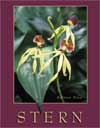1. Stem structure and function need to be examined to understand practical
uses of stems. 2. The shoot system of plants is usually erect, but some stems may be
horizontal or modified for climbing or food/water storage. 3. Leaves of woody twigs may be arranged alternately, oppositely, or
in a whorl. Nodes are stem regions where leaves are attached; internodes occur
between nodes. Most leaves have petioles and blades. Axillary buds occur in
leaf axils. Most buds are protected by bud scales. Terminal buds occur at twig
tips. Terminal bud scales, when they fall, leave bud scale scars that help one
determine the age of the twig. 4. Stipules are paired appendages present at the base of some leaves;
when they fall off, they leave small scars on the twig. When whole leaves fall,
they leave leaf scars on the twig, with tiny bundle scars within the leaf-scar
surfaces. 5. Each stem has an apical meristem at its tip that produces tissues
resulting in increase in length. Leaf primordia develop into mature leaves when
growth begins. Three primary meristems develop from an apical meri-stem: the
protoderm gives rise to the epidermis; the procambium produces primary
xylem and primary phloem; and the ground meristem produces pith and cortex. 6. As leaves and buds develop from primordia, traces of xylem and phloem
branch off from the main cylinder, leaving leaf gaps or bud gaps. 7. A vascular cambium, producing secondary tissues, may arise between
primary xylem and phloem. Secondary xylem cells include tracheids, vessel elements,
and fibers. Secondary phloem cells include sieve tube members and companion
cells. 8. In many plants, a cork cambium producing cork and phelloderm cells
develops near the surface of the stem. Cork cells, which are part of the outer
bark (periderm), have suberin in their walls. Suberin is impervious to moisture,
and the outer bark, therefore, aids in protection. Lenticels in the bark permit
gas exchange. 9. Primary vascular tissues and the pith, if present, constitute the
stele. Protosteles have a solid core of xylem, usually surrounded by phloem;
siphonosteles are tubular, with pith in the center; eusteles have the vascular
tissues in discrete bundles. 10. Dicotyledons (dicots) are plants whose seeds have two seed leaves
(cotyledons), while monocotyledons (monocots) have seeds with one seed leaf.
Herbaceous dicots have vascular bundles arranged in a ring in the stem. 11. Woody dicots have most of their secondary tissues arranged in concentric
layers. The most conspicuous tissue is wood (secondary xylem). In broadleaf
trees, spring wood usually has relatively large vessel members, while summer
wood has smaller vessels and/or a predominance of tracheids. 12. An annual ring is 1 year's growth of xylem. A tree's age and other
aspects of its history can be determined from annual rings. Rays, which function
in lateral conduction, radiate out from the center of the trunk. Older wood
toward the center (heartwood) ceases to function when its cells become plugged
with tyloses. Younger, functioning wood (sapwood) is closer to the surface.
A tree's functions are not particularly affected by the rotting of its heartwood. 13. The wood of cone-bearing trees consists primarily of tracheids,
and resin canals are often present. The wood of conifers has no fibers or vessels
and is called softwood, while the wood of woody dicots is called hardwood. In
woody plants, older tissues composed of thin-walled cells become crushed and
functionless, and some are sloughed off. 14. Laticifers are latex-secreting cells or ducts found in various flowering
plants. The latex of some plants has considerable commercial value. 15. Monocot stems have scattered vascular bundles and no cambia. The
parenchyma tissue is not divided into pith and cortex. Each vascular bundle
is surrounded by a sheath of sclerenchyma cells. Numerous bundles and a band
of sclerenchyma cells and thicker-walled parenchyma cells just beneath the surface
of monocot stems aid in withstanding stresses. 16. Palm trees are monocots that become large because their parenchyma
cells continue to divide. Other monocots develop a secondary meristem that produces
parenchyma cells and secondary vascular bundles. Grasses have at the base of
each internode intercalary meristems that contribute to rapid increases in length.
Several commercially important cordage fibers are obtained from monocots. 17. Specialized stems include rhizomes, stolons, tubers, bulbs, corms,
cladophylls, and tendrils. Such stems may have adventitious roots. 18. The dry part of wood consists primarily of cellulose and lignin.
Resins, gums, oils, dyes, tannins, and starch are also present. Properties of
wood that play a role in its use include density, specific gravity, and durability. 19. Logs are usually cut longitudinally along the radius (quartersawed)
or perpendicular to the rays (tangentially, plain-sawed, or slab cut). Knots
are bases of lost branches that have become covered over by new wood; they usually
weaken the boards in which they occur. 20. About half the timber produced in the United States and Canada is
used as lumber. Sawdust and waste are converted to particle board and pulp for
paper, synthetics, and linoleum. Other timber is used for cooperage, charcoal,
railroad ties, boxes, tool handles, and so forth. Developing countries use a
greater proportion of their timber for fuel. | 


 2003 McGraw-Hill Higher Education
2003 McGraw-Hill Higher Education

 2003 McGraw-Hill Higher Education
2003 McGraw-Hill Higher Education